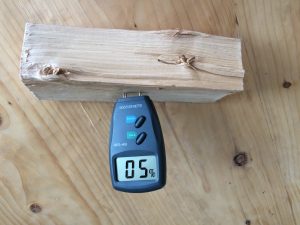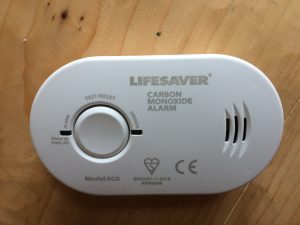Installations are our bread and butter. Our sweeps work regularly with us on installations, so they get to know many flue systems, fireplaces and stoves – how they work and how they are put together.
With each installation, we completely disassemble the stove and then put it back together. It’s second nature to us. We know how vital the stove is and how to fix it if anything goes wrong, for example too much draw, not enough draw, loose blanking plate, cracked firebricks…
On each of our installations, we use what we consider to be the industry’s best materials, and we put everything together using tried and tested techniques. We want to ensure that they are kept in pristine condition and that the flue and stove we fit gives you many years of safe pleasure and looks great year after year. Once we’ve serviced your flue and stove, our aim is to leave you with a stove that looks like new, as well as a system that’s 100% fit for safe and efficient operation again.
Planning your appointment
We’ll correspond by email and establish a date for your service. Please note, we often email many customers at the same time, so appointments are allocated on a first come, first served basis. Then depending on demand, we will schedule another sweep day.
Once we have organised our sweep diary for the day of your appointment (we aim to book appointments around the same area on the same day), we will indicate what number appointment yours is on the list, and an approximate time slot so that you can plan your day – no one likes to be left waiting around! We will call you as we complete the previous appointment, which is likely to be around 30-60 minutes before we reach you.
A straightforward service takes around 30 minutes. Issues such as affixing fire-ropes, replacing firebricks or encountering a bird’s nest will all add time on, but we always do our best to stick to our schedule whenever we can – we’re only human! There is no need to contact us unless we are running very late – we will keep in touch with you.
We will also send a checklist to you in advance of your appointment, to ensure that your service goes as quickly and smoothly as possible. This will include the following;
Parking
Please ensure that there is adequate parking for a large car/van as close to the house as possible as we will have lots to carry!
Contact details
We need a named contact and phone number for the day of the appointment
Directions
Especially if we haven’t been to your home before, we need easy directions and/or a Google Maps pin showing your exact location
Access
We will require access to your property at the time of your appointment. If we aren’t able to carry out the service at the agreed time, you will be liable for a cancellation fee
In order to work around their busy lives, many of our customers entrust us with access to their homes in their absence, by leaving a key for us somewhere secure. Rest assured – we will treat your property with complete respect, and you will barely know we have been until you see your shiny, good-as-new stove!
How to prepare your fireplace before we visit
We need the fireplace to be clear so we can lay our dustsheets down and organise the area for all our equipment.
We ask you to clear the fireplace including any ornaments on the hearth and mantelpiece so that we have clear access in which to work from.
We prepare the fireplace using a combination of dust sheets and plastic sheets. We ensure the soot-fall and ash are contained within the flue and stove. However, if your flue has not been swept for quite some time, there may be a large amount of soot-fall or debris. We will always do our best within our capabilities to contain this. If you are concerned about your furniture and want to sheet this up as an extra precaution, please feel free to do so. We always carry extra dust-sheets with us just in case.
Our equipment
Rather than relying on the old method of sweeping flues using screw together rods and a handle to manually rotate each rod, we changed to power sweeping several years ago. It is an expensive system that requires regular servicing, but it is an extremely effective and time saving system. Most flue manufacturers recommend this system for sweeping their flues.
Flues can be cleaned by using a variety of techniques. Sticking a brush on the end of a rod, then vigorously moving it back and forth is not an effective or safe technique – this will likely tear your liner or damage your flue. There are different sizes and types of brushes and rods. There are also various techniques that are used to remove the waste products from your flue effectively. Knowing what method and what equipment should be used for your “sweep” will prevent damage to your flue.
There are several brands available, but we have invested in what we believe to be the best power sweeping kit available – Rotary Power Sweeping.
It is a dual lock system and is extremely effective at cleaning flues. There are different rods depending on what flue system you have. There are also different brushes and rod end connections depending on your system and what needs removing or clearing. The rods are attached to a drill, and the drill spins the rods and brushes/terminals making for a much more effective cleaning method.
On completion, all waste will be removed, put in a bin bag and placed it in your refuse bin outside ready for collection.
Our vacuum
We use a Hazard (“H”) class vacuum. It is louder and larger than a standard vacuum.
Replacing consumable parts
Consumable parts are charged as extra.
If your stove has specific vermiculite bricks, and baffles, these will need ordering in. The same applies to damaged glass. Returning to fit these components will be charged accordingly and can be quoted for.
Ideally, we’ll be able to pick up on whether your stove requires new parts at the time of servicing, knowing that your stove should last another year. We’ll order them and bring them along on the next service.
If you know your stove or certain parts are damaged, warning by email/photos is helpful and will avoid extra fees for return visits being applied. The more time you provide, the better; We tend to require a minimum of a couple of weeks’ notice to order new components.
The extra things we do as part of your service
Glass
Where we can, your glass will be cleaned and brought back to life. Between services, you can use stove cleaning wipes such as Wonder Wipes, which we can provide for you. These cost £XX per pack and we can bring them along to your service – just let us know when you book in.
Repainting
If your stove needs repainting, we’ll do this as part of the service. We carry black paint as standard, but if your stove is a different colour, we can supply a can of paint (chargeable) and use this; it should be enough for about 3-5 years of services, and it will be left with you for safe-keeping.
Checking fuel

We will check the fuel that you are using, including the moisture content of your wood – it should always be below 20% to ensure that it burns cleanly and efficiently.
CO alarms

Carbon monoxide (CO) is known as a silent killer. It is an odourless, invisible, and deadly gas.
CO can be released when burning fuel. If you have an open fire or a stove, you should have a CO alarm fitted. The placement of the alarm is precise.
We will check your CO alarm is working and fitted correctly.
We can supply and properly fit CO alarms for £45.00 + VAT. It might well be the best money you’ll ever spend! Our CO alarms conform to building regulations (ADJ 2010).
Click here for more information on Carbon Monoxide provided by HETAS.
Certificate
On completion of your service, we will supply you with a certificate, confirming that your stove and flue system is safe to use, and outlining any advisories.
Recommendations
If you are doing something wrong – misusing the stove, burning the wrong fuels – there will be tell-tale signs which we can spot. We’ll be able to help you correct it with freely given information and advice – often linked to various industry regulated and approved websites.
When not in use
If your stove is not in use, the air vents should be left open, and your door slightly ajar to encourage airflow within the flue and stove preventing moisture build up and rusting.
